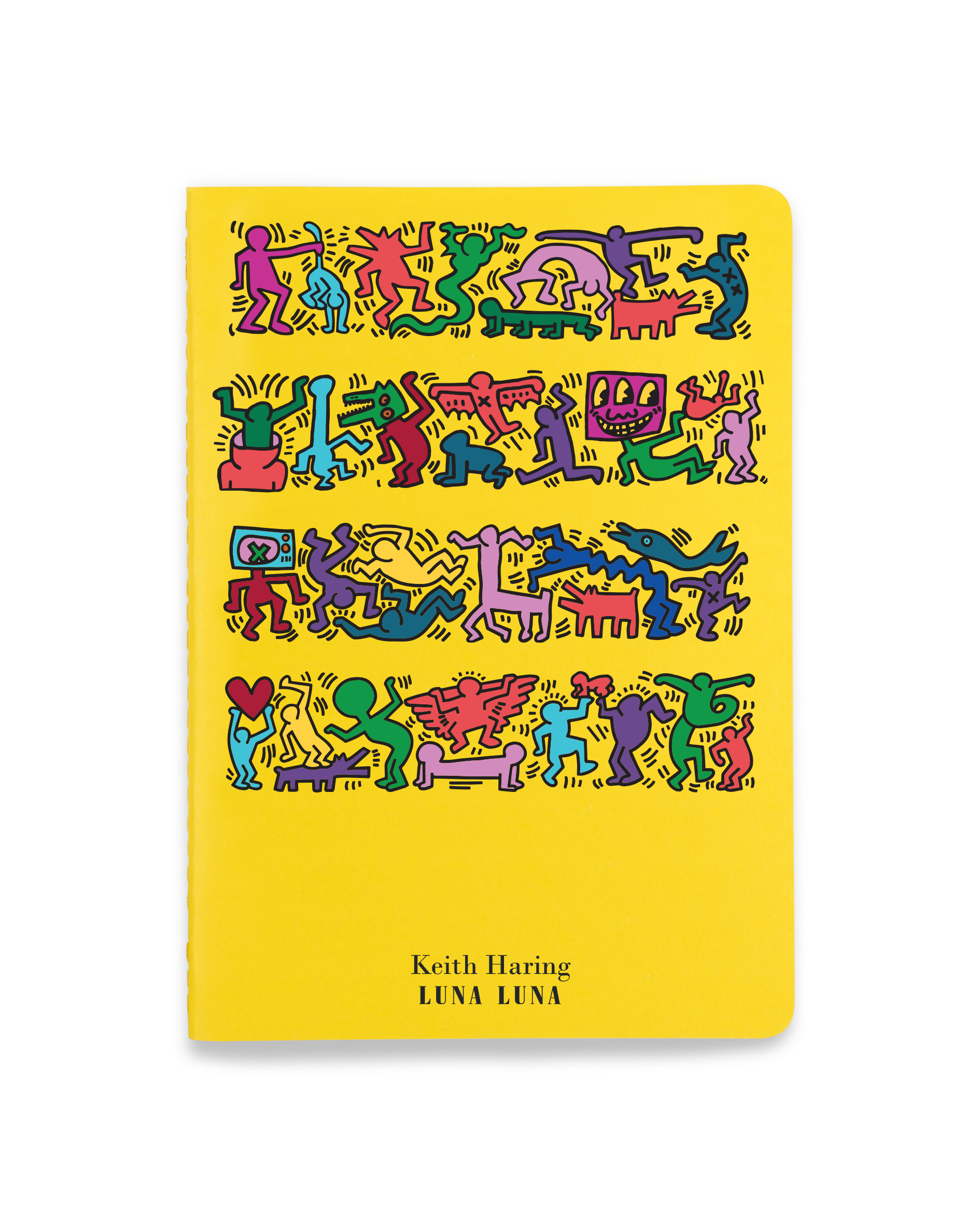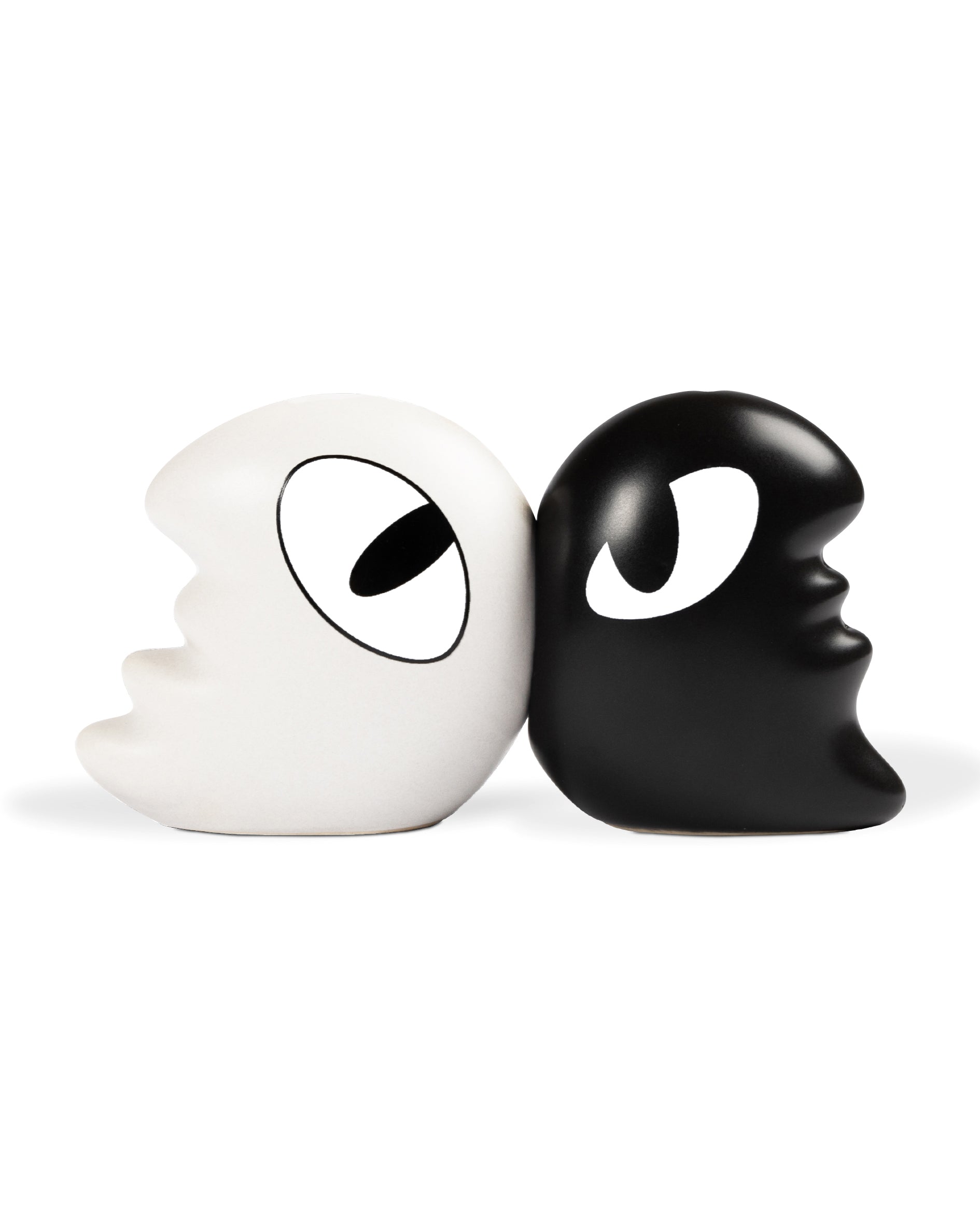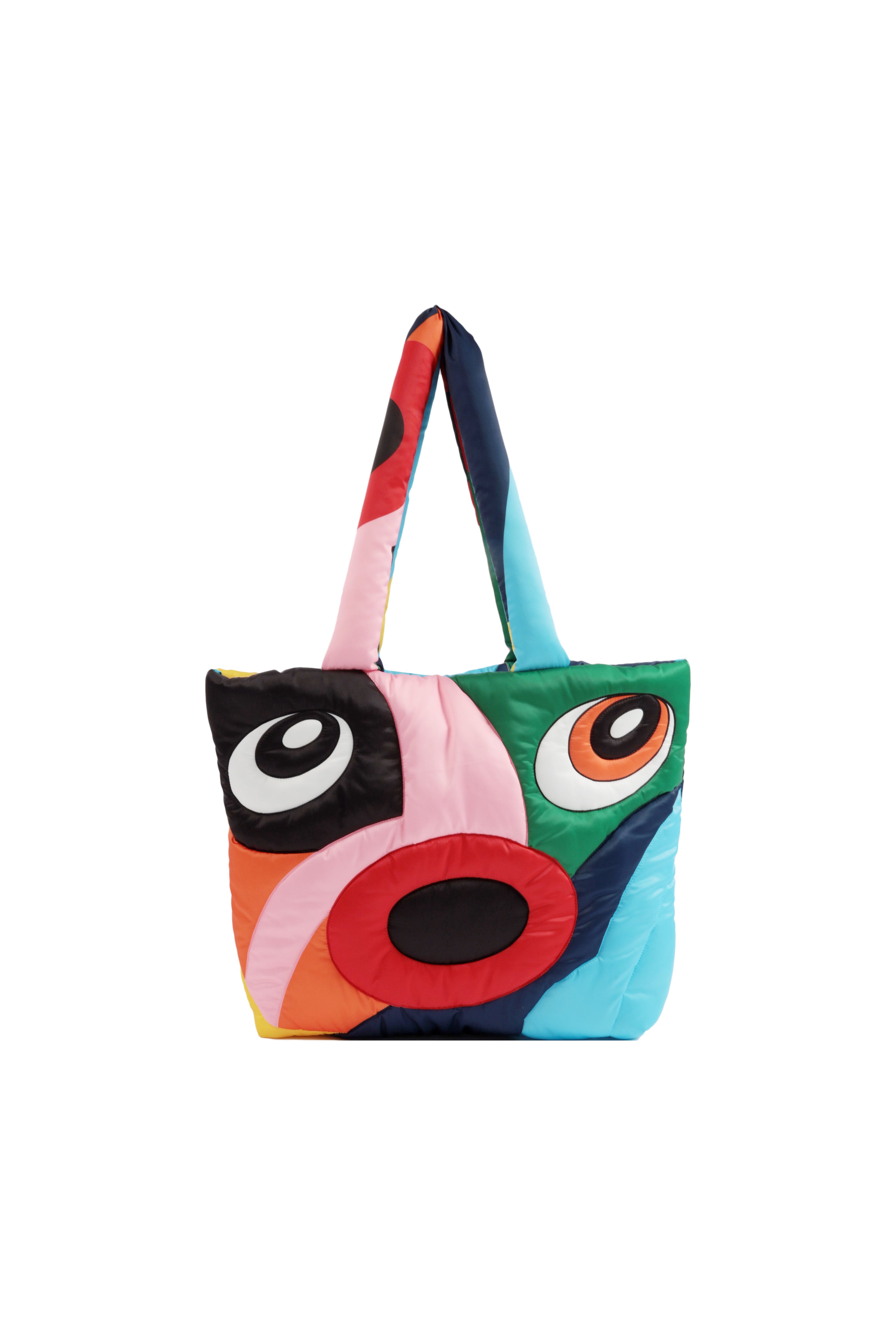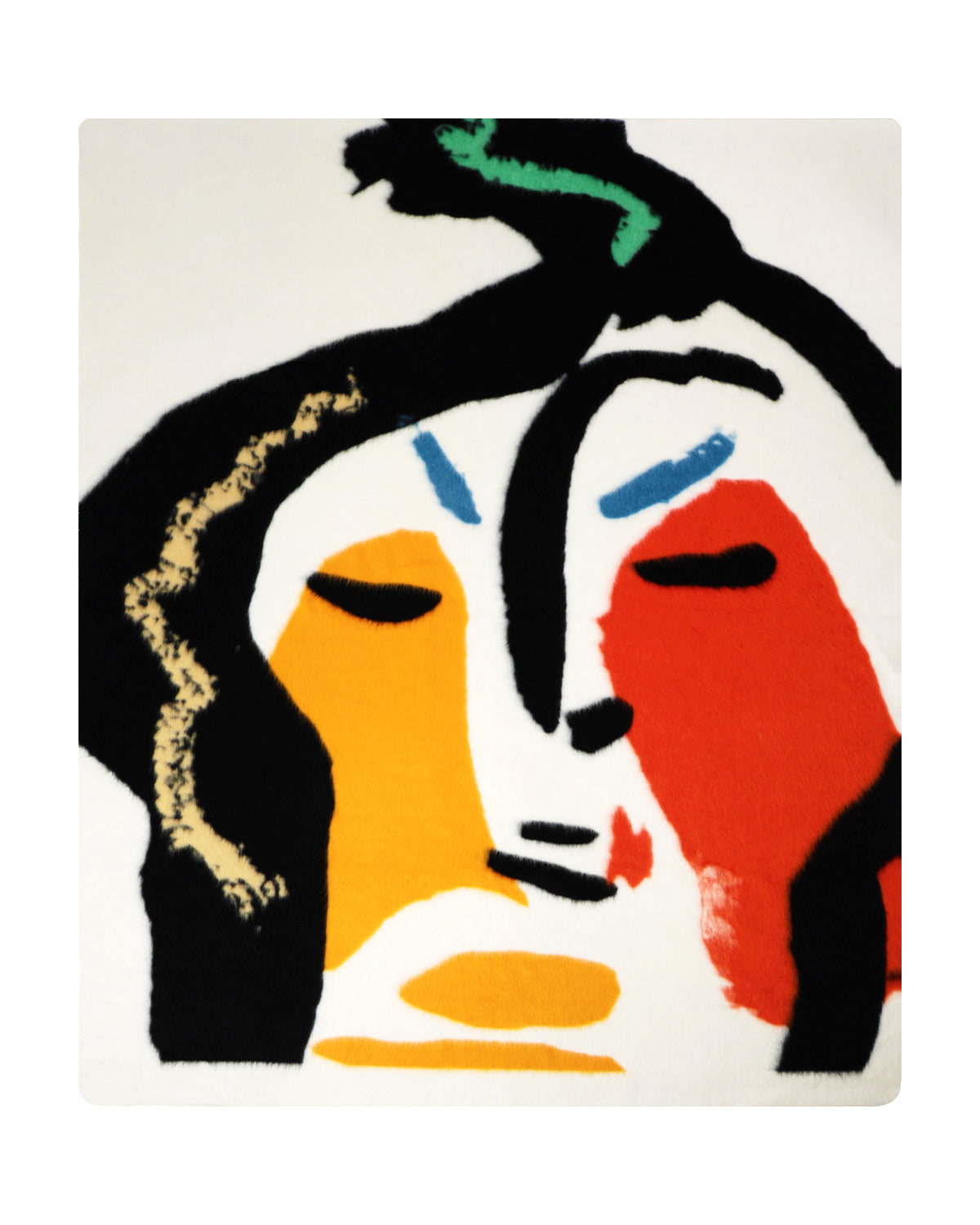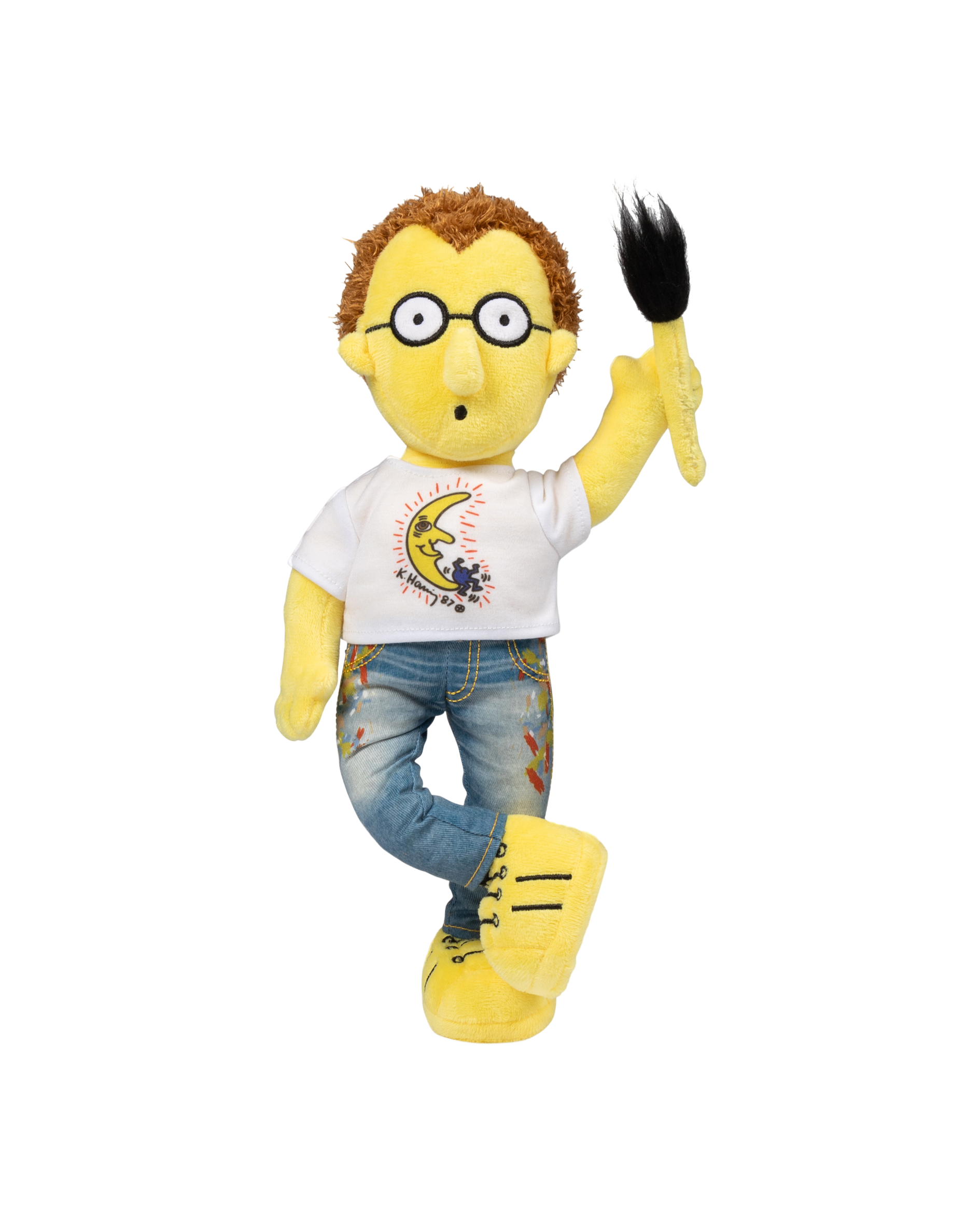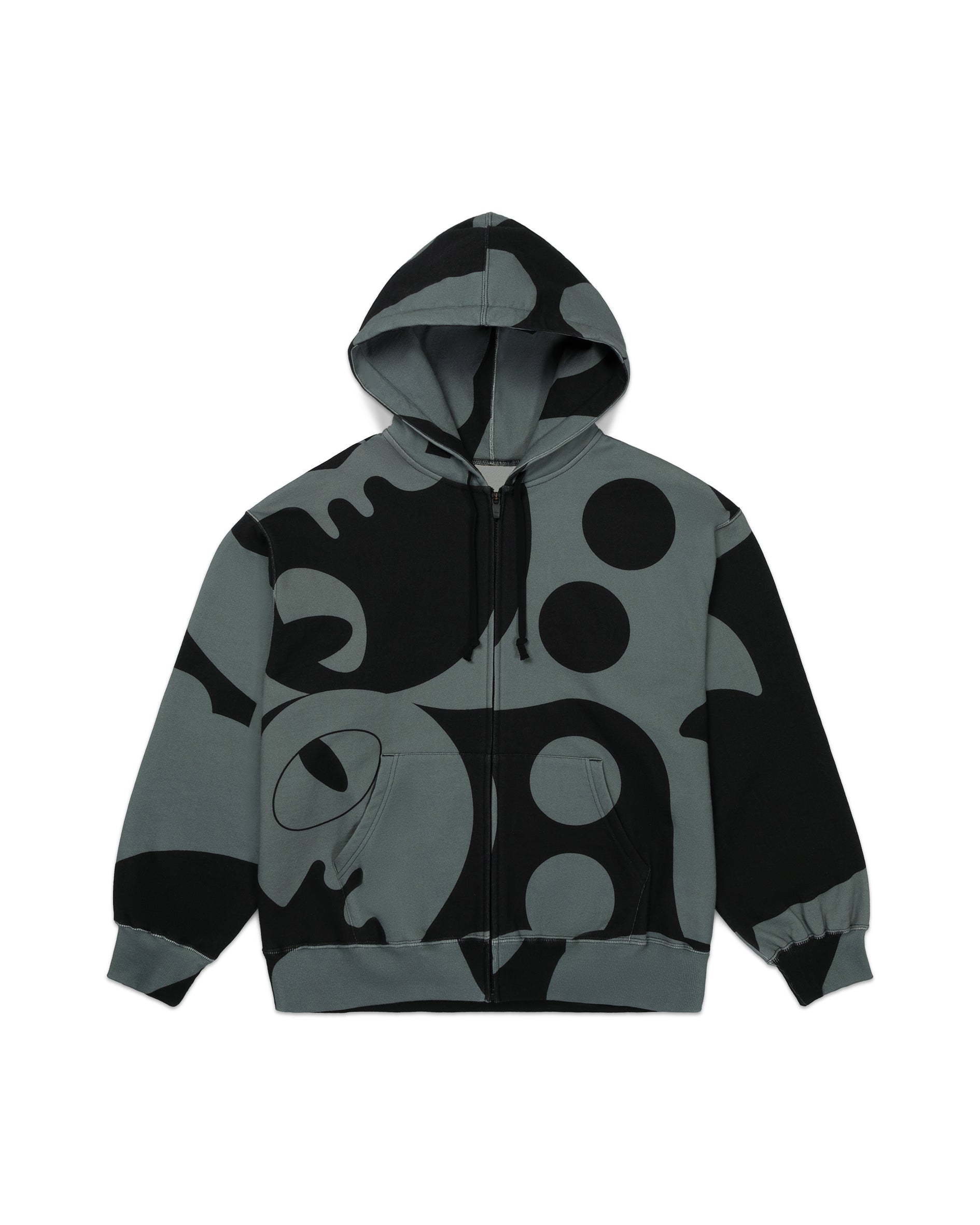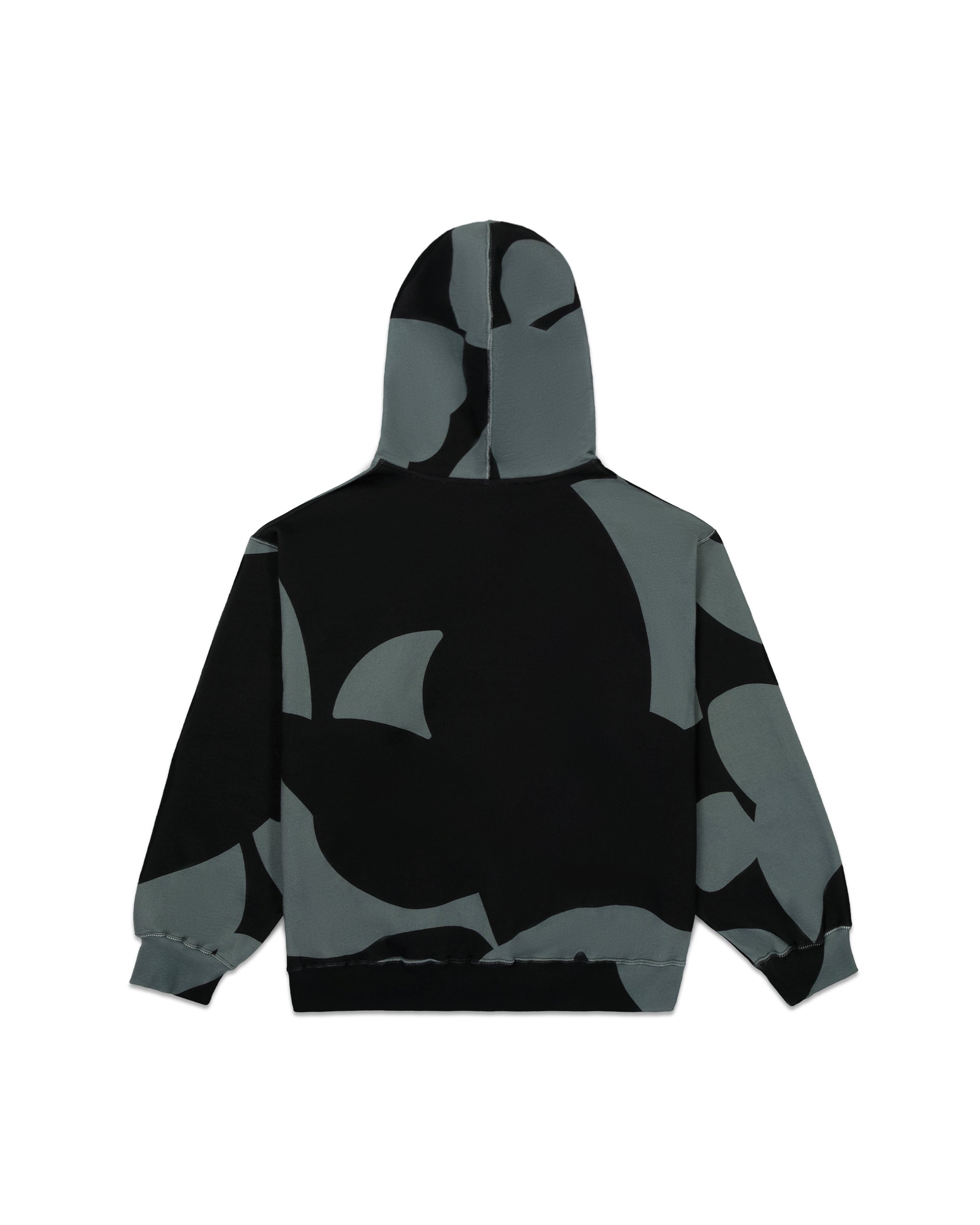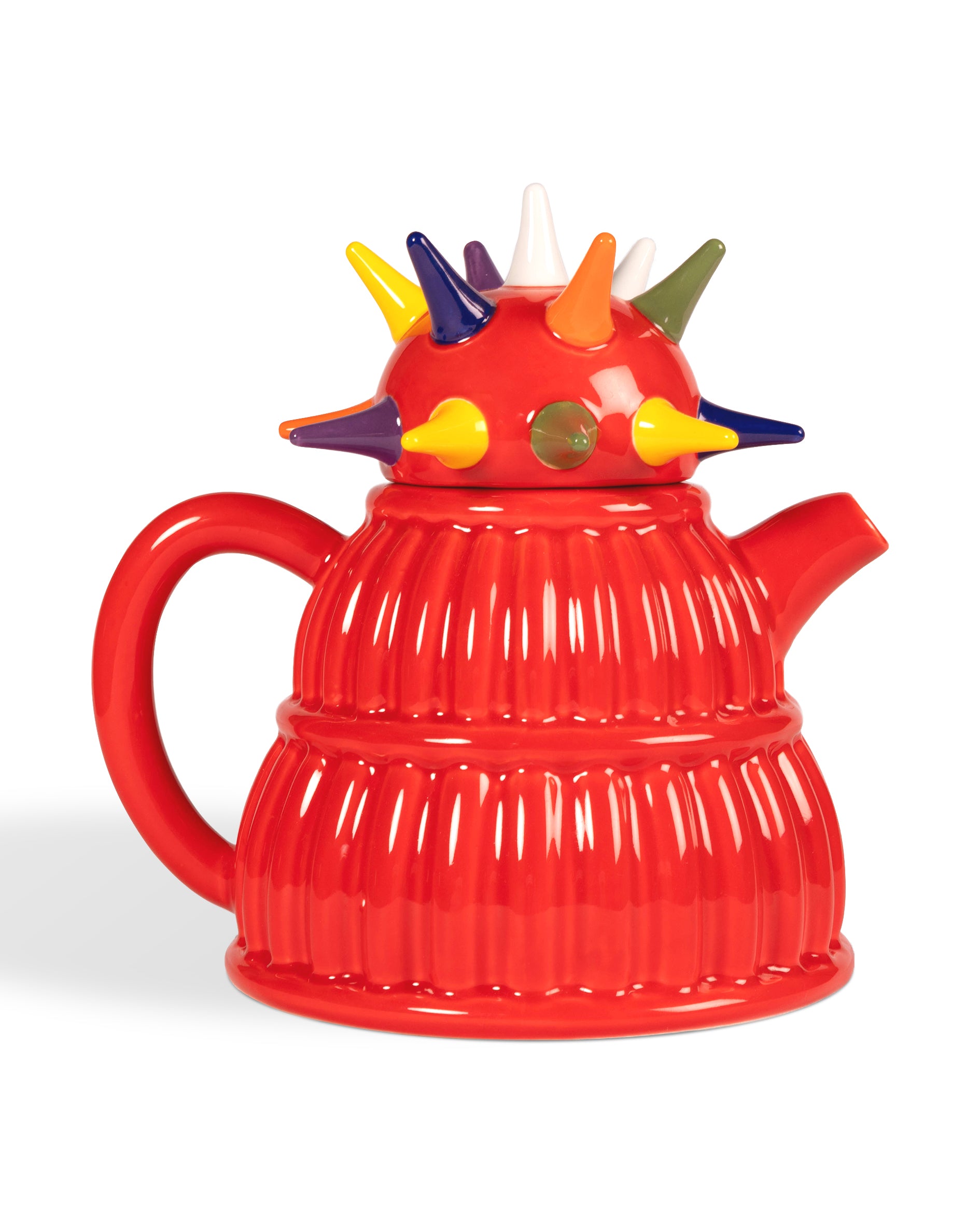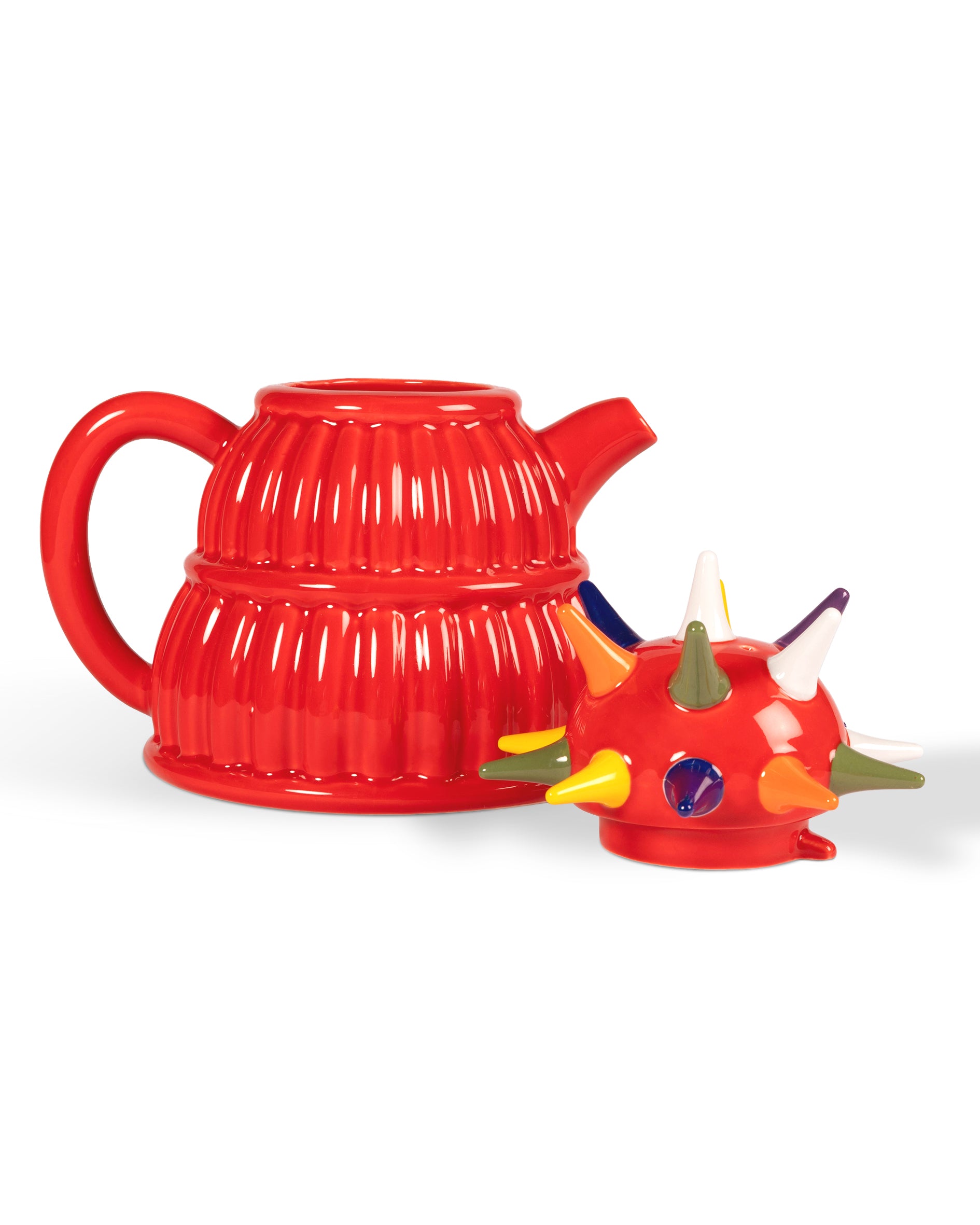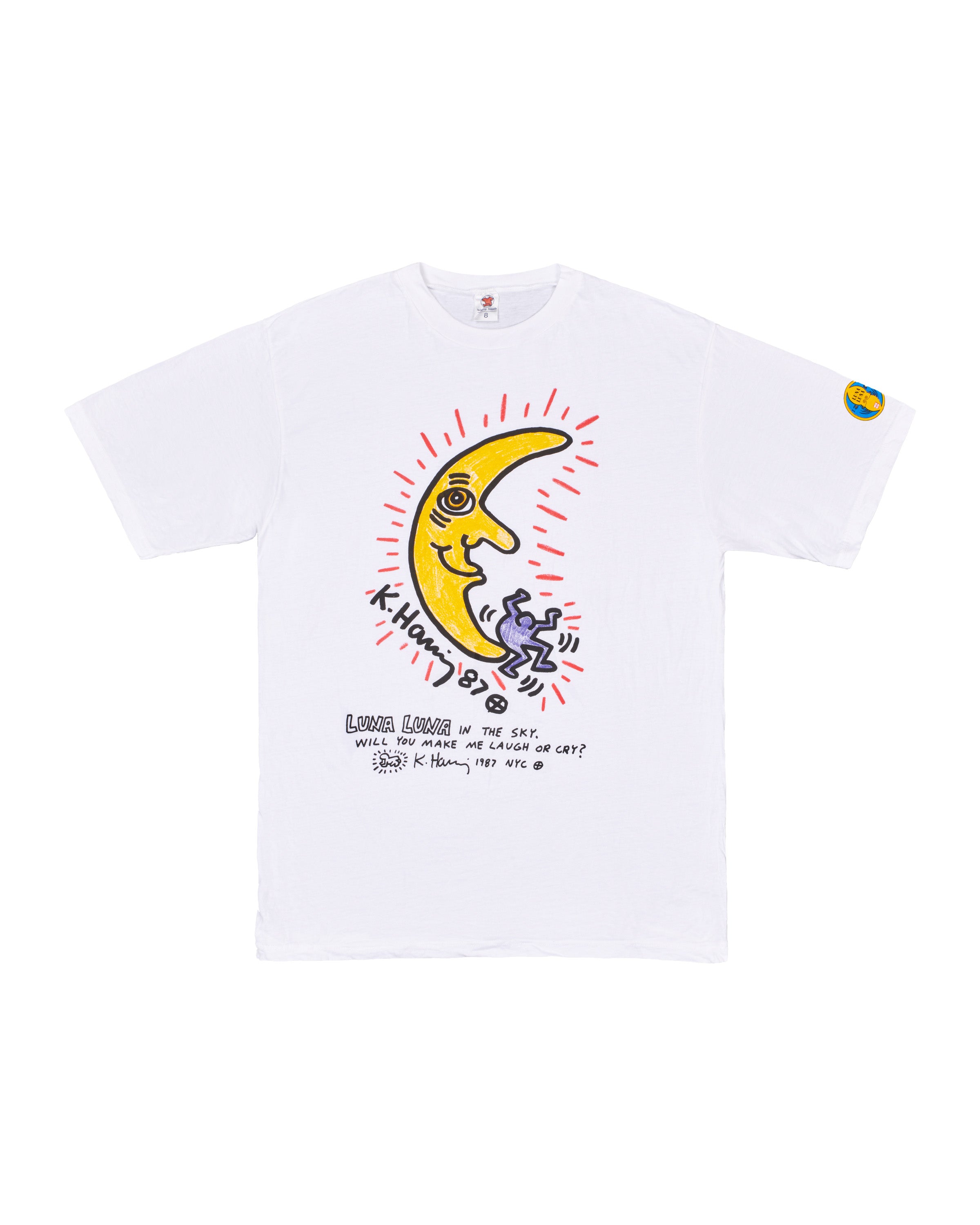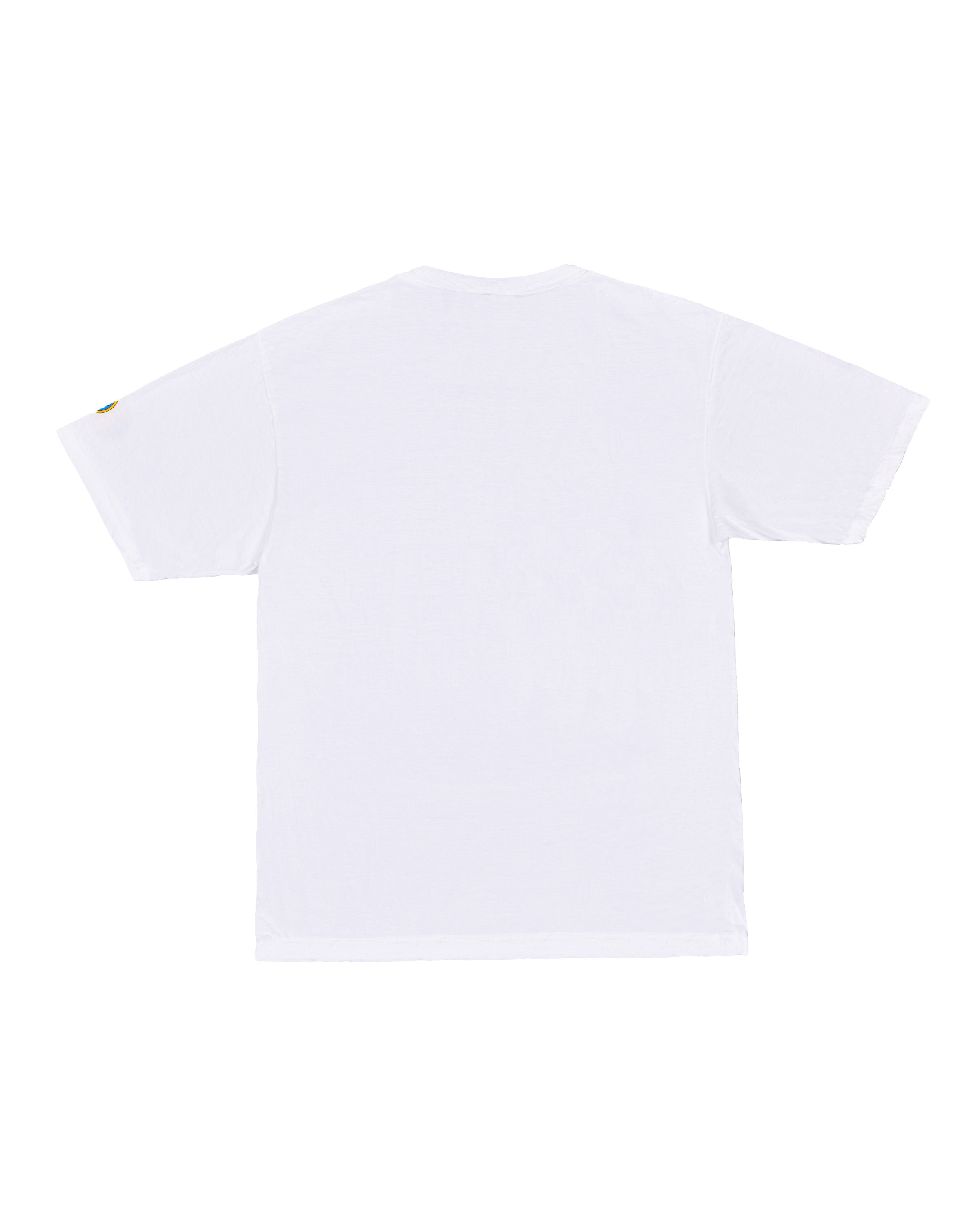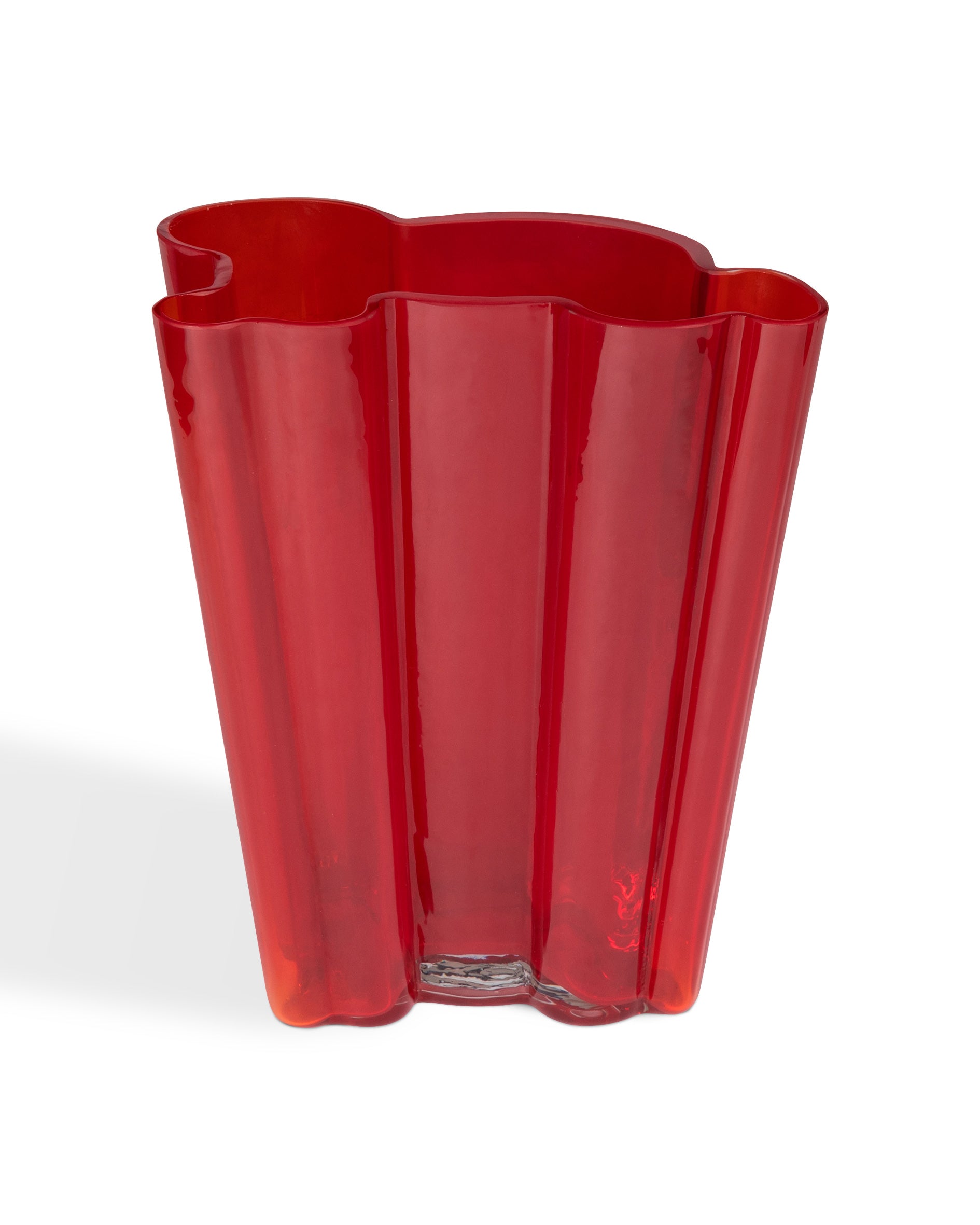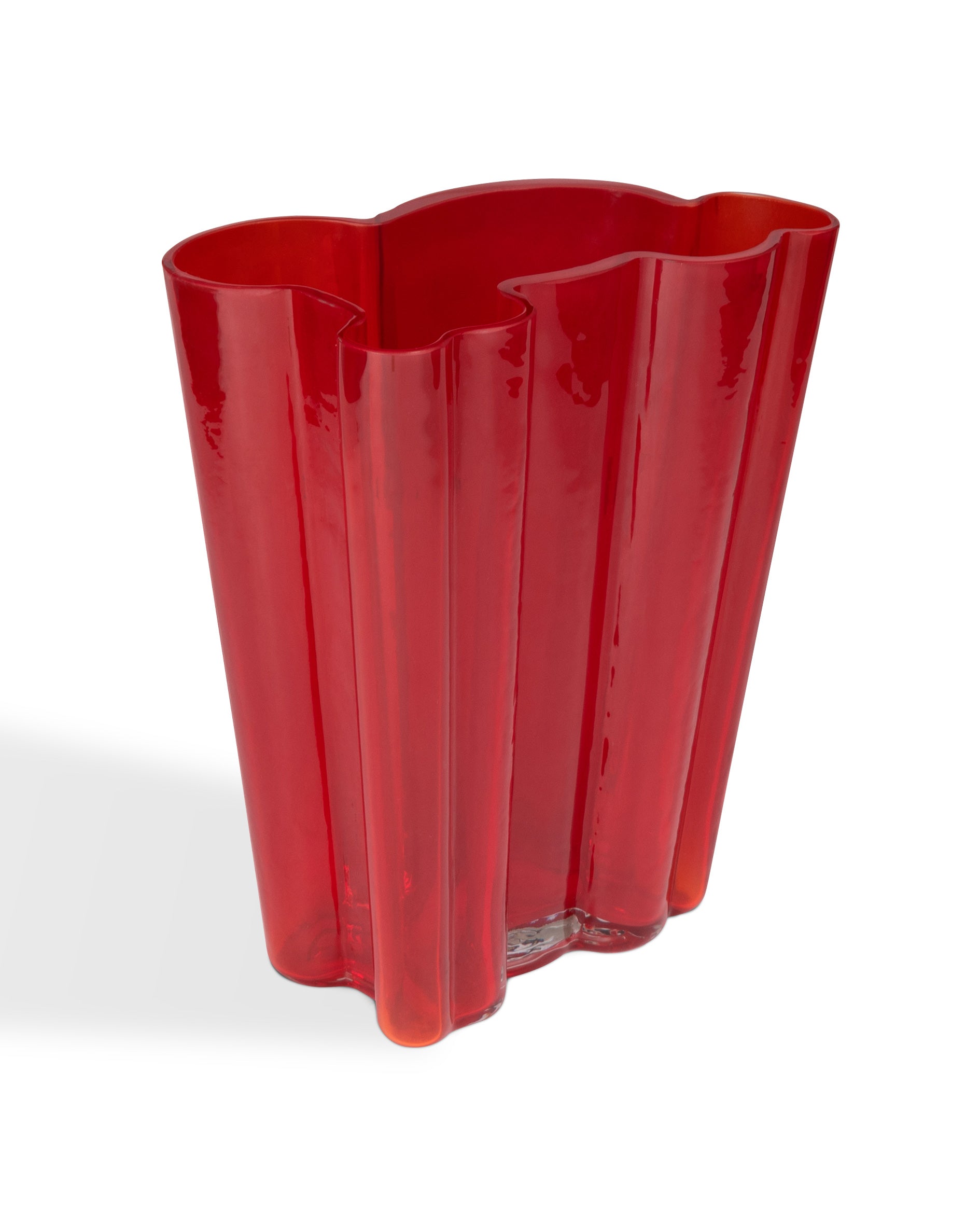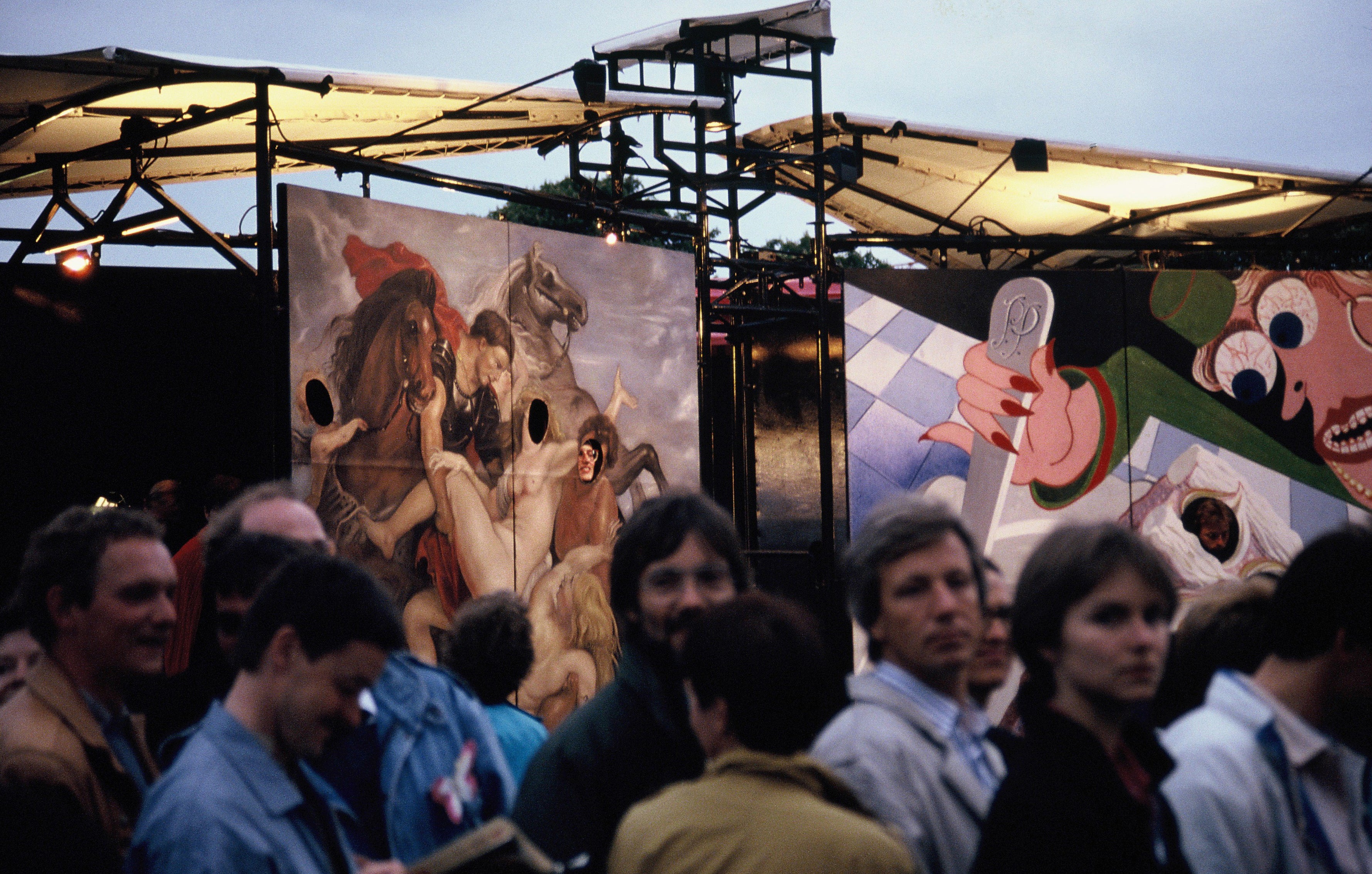
Fairground view: Peter Pongratz, Head-through-the-wall painting. Luna Luna, Hamburg, Germany, 1987.
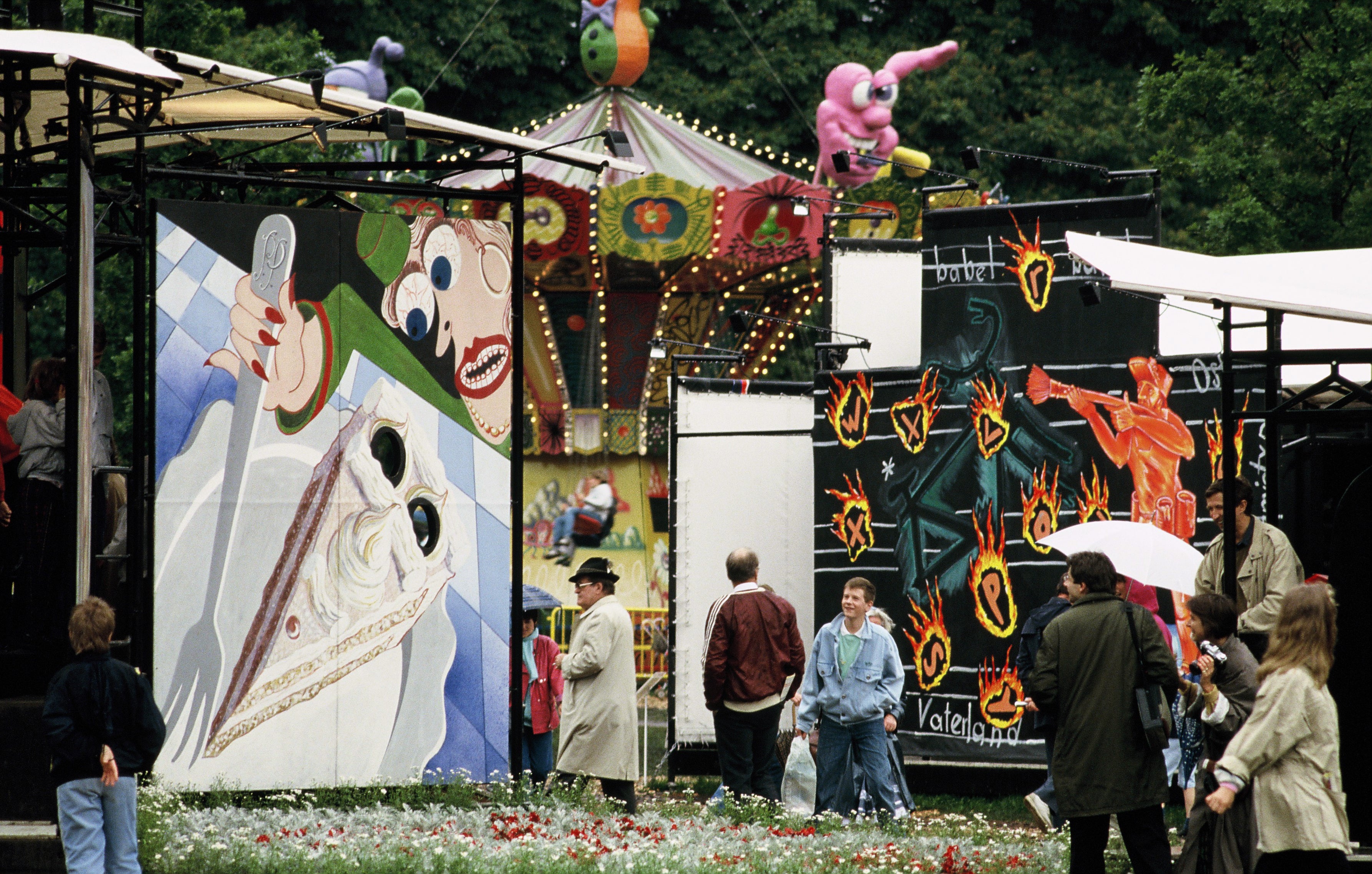
Fairground view: Peter Pongratz, Head-through-the-wall painting. Luna Luna, Hamburg, Germany, 1987.
Peter Pongratz creates paintings that are heavily influenced by his training as a jazz drummer. Pongratz attended the Academy of Fine Arts in Vienna and then the University of Fine Arts in Berlin, later rejecting fine art academic tendencies in favor of the self-taught style of the Art Brut movement, particularly artists from the Maria Gugging Psychiatric Clinic (including Luna Luna artist August Walla).
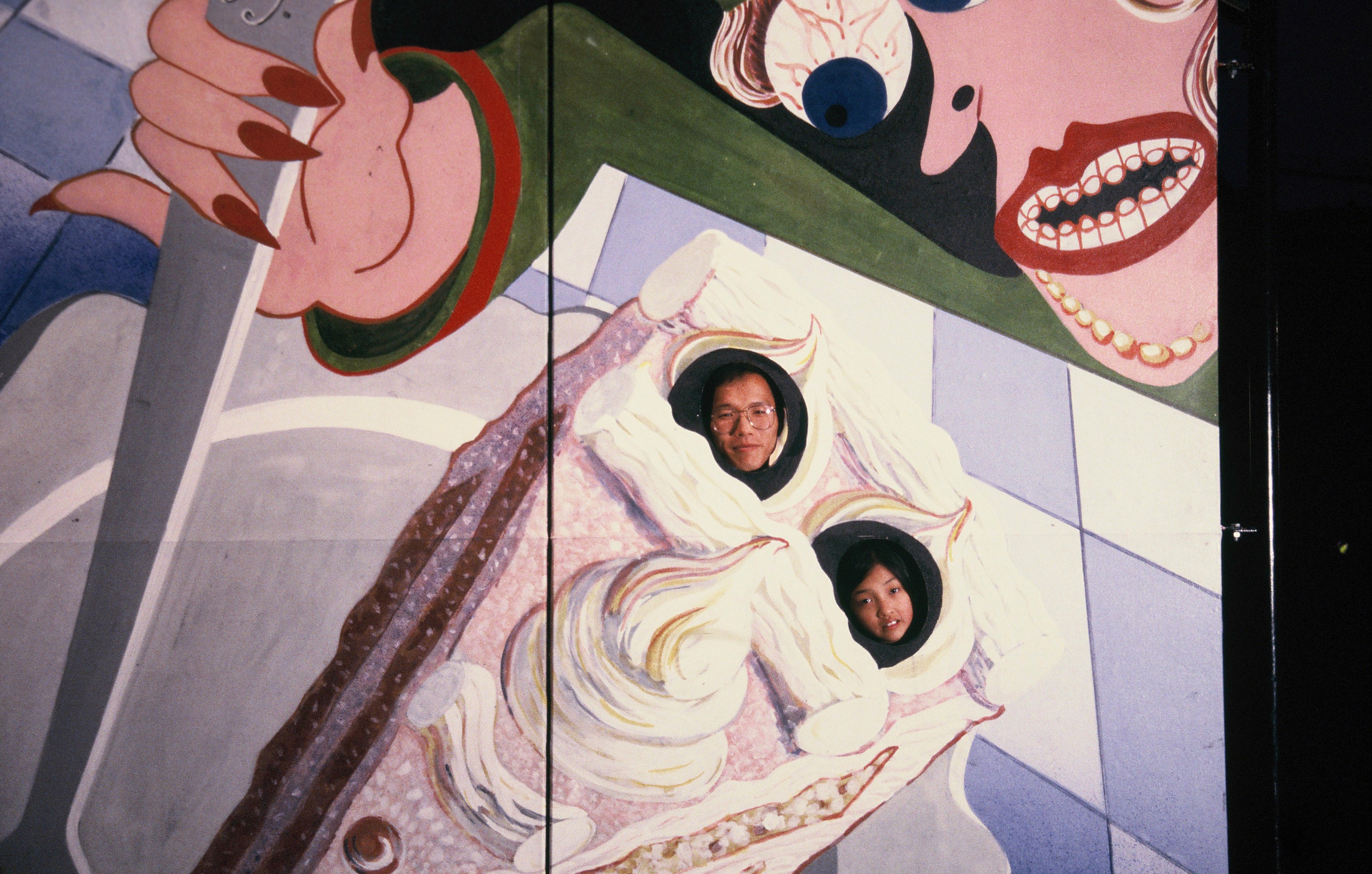
Fairground view: Peter Pongratz, Head-through-the-wall painting. Luna Luna, Hamburg, Germany, 1987.
Pongratz’s portraits and landscape paintings are marked by primary colors, simple shapes, and dense patterns drawing from children’s paintings and the free association of jazz. In Blues for Max (1986), for example, a many-eyed, rainbow-hued creature reaches toward the heavens while sinking into a black crevasse outlined with oval-shaped forms swarming the edges of the canvas like hungry fish. In 1968, Pongratz participated in the exhibition Wirklichkeiten (“Realities”) at the Vienna Secession, alongside artists Franz Ringel, Martha Jungwirth, Robert Zeppel-Sperl, Kurt Kocherscheidt, and fellow Luna Luna contributor Wolfgang Herzig. The group favored traditional modes of artmaking, such as painting and drawing, at a moment when the prevailing artistic tendencies leaned toward Conceptual art.
Pongratz creates paintings that are heavily influenced by his training as a jazz drummer.
Pongratz created a head-through-the-wall painting of a woman in a matching green hat and coat eating a slice of cake. Visitors could stick their faces through the cut-out holes in the painting and pretend that they were being devoured.
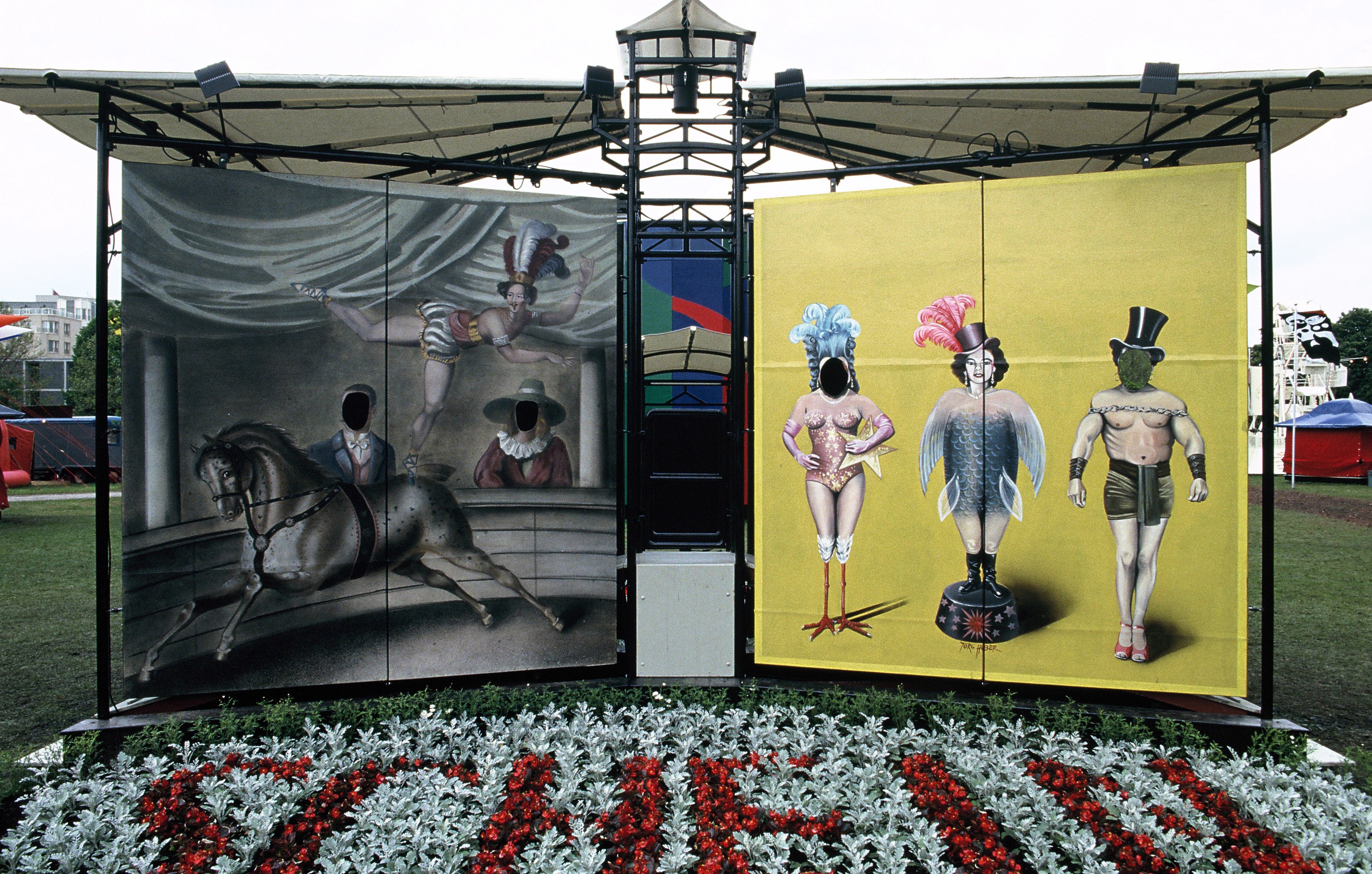
Fairground view: Peter Pongratz, Head-through-the-wall painting. Luna Luna, Hamburg, Germany, 1987.
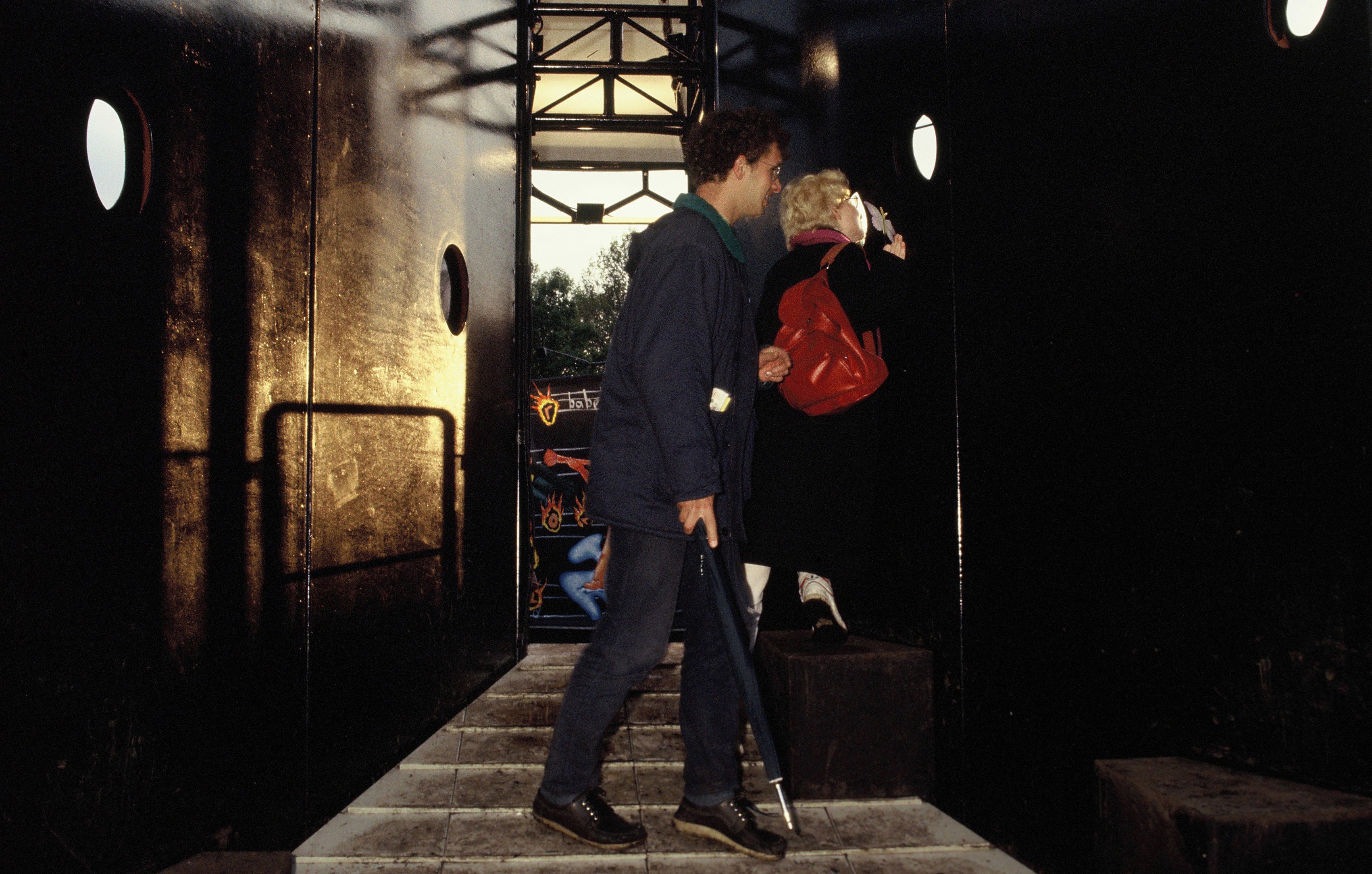
Fairground view: Peter Pongratz, Head-through-the-wall painting. Luna Luna, Hamburg, Germany, 1987.

